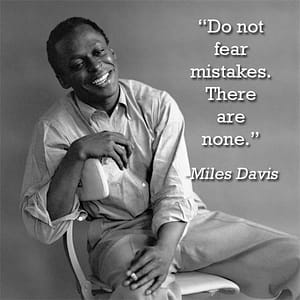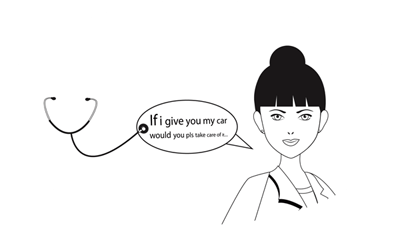 Many people do not want to make mistakes in learning languages, however they serve an important function in learning, which in fact can’t be avoided. As James Joyce said,”Mistakes are the portals to discovery”. They alert us to what we are doing wrong and hence what we need to work on to progress.
Many people do not want to make mistakes in learning languages, however they serve an important function in learning, which in fact can’t be avoided. As James Joyce said,”Mistakes are the portals to discovery”. They alert us to what we are doing wrong and hence what we need to work on to progress.
To better understand this we need to appreciate that there are different stages in learning languages. One stage is to be able to say what you mean so others can understand you in the same way you intended to be understood. Another stage is to say it in a way similar if not the same way as a native speaker would say it.
To get to the second stage, though you could do it by yourself, a teacher could help you improve by “teaching” you and also by alerting you to where you are making mistakes, so you can improve your production. Finding the mistakes you make is a critical step if you want to improve the language you are learning.
How about if there is no teacher?
How to do this organically is to become more attentive and more perceptive about what native speakers say and write. The more perceptive and attentive you become, the easier it is to find the differences between what “they” say and what “I” say. For advanced learners of any language wishing to become more and more native like, I would suggest that this is key method you need to get on top of.

If, as an English language learner, you would like to get some feedback on your pronunciation, as you are finding difficult to a way of find out just what you need to work on, I have created just such a service. Just check it out here.
Finding the differences will alert you to “the mistakes” you are saying. Once you find your mistakes, with or without a teacher, what then?
Listen to this audio extract below to get some powerful insights into what “talented” language learners do with the mistakes they make. This extract was taken from a talk given to English language learners. But this advice applies to all language learners. It does not matter whether you have a teacher or not, just whether you want to know what to do with the mistakes you are making in your language learning.
Understanding the reasons you make mistakes is critical. Each different reason requires you to act differently to eliminate the mistake. Here are some possible reasons you make mistakes:
- I didn’t really understand that I had to do XYZ.
(This requires you to improve your understanding….) - I knew that I had to do XYZ but I was not paying enough attention to my speaking/writing so I made this mistake.
( This one requires you to take more care, be more mindful….) - I understand and use XYZ but didn’t really understand that it had to be used in this situation in this way.
(This one requires you to modify your understanding a little….)
Your mistakes are telling you what you need to do. Don’t try to hide them! Instead, learn to value them, listen/watch for them as they are your lessons appearing before your very eyes. This is one thing what separates great learners from the rest. They value and learn from their mistakes.

I really appreciate this post! I had just read another article a few days ago about error correction in our students in which the author made a strong case for ceasing recasting errors as it is not effective in teaching language. Your point about understanding why an error is an error ties in with what I shared on that post- I teach Spanish Kindergarten-4th Grade, and my method of error correction is to encourage my students precisely to understand why what they have said or written is an error with the intention of getting them to reflect on what they know and have learned. 99 out of 100 times, my students are able to give me the correct form, whether it be to put an ‘s’ at the end of a word to make it plural, or to use the correct adjectival ending to indicate gender, etc. This action of reflection, in my view, gets to deeper learning and encourages students to think about what they are producing. Though they may continue to make the same error, I do see it lessen over time.
Julie
Mundo de Pepita, Resources for Teaching Spanish to Children
Thank you for your thoughtful response Julie.
As we agree, the first part of the process is to have the learners become more aware about what they are saying (etc) and through that they can start to self correct. Initially, their self correction is with the teacher indicating the need to do that.
The second part is for them to do the whole process without teacher intervention. My experience, mainly with adults, is that it is the learners who really want to improve who will do what it takes to catch themselves at the moment, or the moment before, they speak. They have to do that a sufficient number of times so that this new way of saying something starts to become automatic. In other words less attention needs to be payed to what is being said ( in terms of the structure and the sounds of the language..not the meaning of course! 🙂 )
[…] oneself also means knowing that mistakes are a natural part of learning and in fact are needed for real learning to happen. Without finding […]